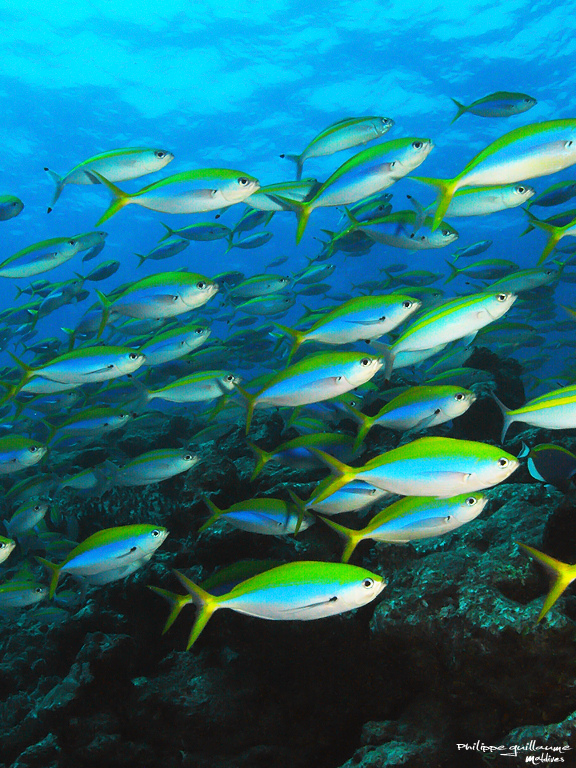- Classification
- ACTINOPTERYGII
-
Fish Classification
-
Class
ACTINOPTERYGII Ray-finned fishes -
Order
ALBULIFORMES(1)Bonefishes ... ANGUILLIFORMES(16)Eels ARGENTINIFORMES(7)Marine smelts ATELEOPODIFORMES(1)Jellynose fishes ATHERINIFORMES(5)Hardyheads AULOPIFORMES(15)Lizardfishes ... BATRACHOIDIFORMES(1)Frogfishes BELONIFORMES(5)Needlefishes ... BERYCIFORMES(7)Squirrelfishes CLUPEIFORMES(4)Herrings CYPRINIFORMES(2)Carps CYPRINODONTIFORMES(2)Pupfishes ... ELOPIFORMES(2)Tarpons, tenpounders GADIFORMES(9)Cods, grenadiers GASTEROSTEIFORMES(1)Sticklebacks GONORHYNCHIFORMES(2)Beaked salmons LAMPRIDIFORMES(5)Opahs, ribbonfishes LOPHIIFORMES(16)Anglerfishes MUGILIFORMES(1)Mullets MYCTOPHIFORMES(2)Lanternfishes NOTACANTHIFORMES(3)Halosaurs ... OPHIDIIFORMES(6)Brotulas, cusk-eels OSTEOGLOSSIFORMES(1)Bony tongues PERCIFORMES(127)Perches and allies PLEURONECTIFORMES(10)Flatfishes POLYMIXIIFORMES(1)Beardfishes SALMONIFORMES(4)Salmons, Trouts SCORPAENIFORMES(23)Scorpionfishes & allies SILURIFORMES(2)Catfishes STEPHANOBERYCIFORMES(4)Pricklefishes and allies STOMIIFORMES(4)Dragonfishes SYNBRANCHIFORMES(1)Swamp eels SYNGNATHIFORMES(6)Seahorses, pipefishes TETRAODONTIFORMES(10)Puffer-fishes ZEIFORMES(7)Dories
Class ACTINOPTERYGII
The enormously diverse Actinopterygii, or the ‘ray-finned fishes’, is one of two living groups of bony fishes.
The ray-finned fishes is the largest and most successful fish and vertebrate group, containing more than half of all living vertebrate species.
Although the other group, the lobe-fins (Sarcopterygii), contains only eight living species (two coelocanths and six lungfishes) it gave rise to the tetrapods - the four-legged vertebrates (including we humans).
Ray-finned fishes have fins made up of membranes with bony supporting structures.They exhibit an amazing array of body forms and adaptations, allowing them to inhabit almost all aquatic environments, including extreme habitats such as mudflats, hot desert springs, subterranean caves, high altitude lakes and streams, polar seas and the depths of the abyss – environments where temperatures, salinities, pH levels, and dissolved oxygen levels may range from one extreme to another.
The fossil record of ray-finned fishes dates back to the Devonian period.
References
Bellwood DR, Goatley CHR, Bellwood O, Delbarre DJ, Friedman M. 2015. The Rise of Jaw Protrusion in Spiny-Rayed Fishes Closes the Gap on Elusive Prey. Current Biology 25: 2696–2700. http://dx.doi.org/10.1016/j.cub.2015.08.058
Helfman, G., B.B. Collete, D. Facey. 1997. The Diversity of Fishes. Malden, Mass.: Blackwell Science.
Moyle, P. & J. Cech. 2004. Fishes: An Introduction to Ichthyology. 5th Ed. Upper Saddle River, NJ: Prentice-Hall, Inc.
Nelson, J.S. 2006. Fishes of the World. Hoboken, New Jersey : John Wiley & Sons, Inc. 601 pp.
Paxton, J.R. & W.N. Eschmeyer (eds). 1998. Encyclopedia of Fishes. San Diego, CA: Academic Press.
Price SA, Friedman ST, Wainwright P.C. 2015. How predation shaped fish: the impact of fin spines on body form evolution across teleosts. Proc. R. Soc. B 282: 20151428. http://dx.doi.org/10.1098/rspb.2015.1428 PDF

